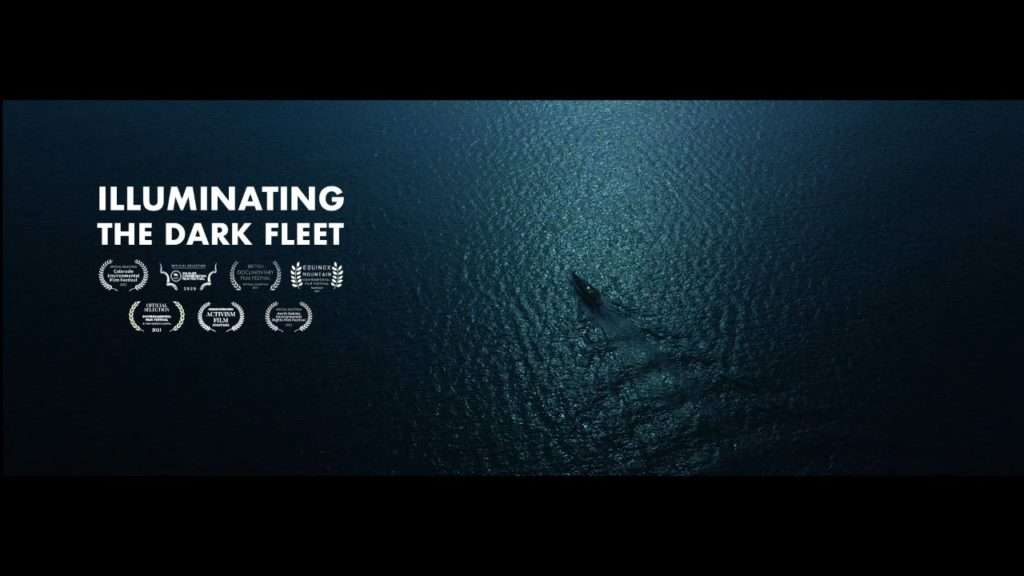Dark fleets – illegal fishing vessels which deactivate their tracking devices in order to fish in protected areas – are now being exposed by advances in satellite monitoring technologies.Perhaps most notably among these advances, the organization Global Fishing Watch has created the first-ever open-access database of global fishing activity, updated in near-real time, providing a major step towards better ocean management.

Overfishing is a major environmental issue – 85% of all fish stocks are already being fished to capacity. Scientists estimate that as much as 31% of all fish caught is illegal, unreported, or unregulated (IUU). As such, Marine Protected Areas (MPAs) are crucial safe havens for fish, yet cover less than 8% of the ocean and are difficult to monitor first-hand, thus being seen as an open season by many unregulated industrial fisheries.
Until just a few years ago, maritime authorities were relatively uninformed about who was fishing the world’s oceans, and where. They were reliant on captains and corporations reporting their positions and catch volumes accurately. Now, with Global Fishing Watch’s revolutionary advance in monitoring technology, they are able to accurately track fishing activity regardless of whether vessels are transmitting their locations or not.

Use of the Automatic Identification System (AIS) has been mandatory on board commercial vessels since the early 2000s. AIS continuously transmits a ship’s location, identity and speed over public VHF radio waves. These details can then be picked up by tracking stations along nearby coastlines, or by a growing network of satellite receivers. At any given time, over 200,000 vessels can be detected worldwide via AIS.
This technology was originally developed to prevent collisions at sea and improve surveillance. By simply tracking vessels which are using activated AIS transponders, Global Fishing Watch can determine which ports they visited, the location and duration of fishing activity, and whether or not they entered an MPA or no-take zone to fish.
In addition, GFW has developed strategies to monitor dark fleets that make use of AIS in a more indirect way. Commercial fishing vessels tend to operate in remote waters, far from their home ports. They rely on a global network of support ships which provide refuelling services, deliver supplies, or transport fish to market ports. While this system is necessary from an efficiency standpoint, it is difficult to regulate, meaning illegal catch can go undetected as it is passed from vessel to vessel.
Tracking unusual AIS patterns can reveal meetings between tankers or cargo vessels and dark fleets. A recent report from GFW revealed that many illegal fishing vessels turn off their AIS prior to these meetings in order to avoid detection by authorities. When support vessels appear to be loitering without reason, they are highly likely to be interacting with these “invisible” fishing vessels.
In May this year, the non-profit organisation launched the Global Fishing Watch Marine Manager portal. This innovative digital platform gives maritime management agencies and researchers access to a wide range of datasets and analytical tools, allowing them to monitor vessels involved in activities like commercial fishing, oil drilling and shipping. Early adopters of this platform included management authorities for some of the world’s most important MPAs, including the Galapagos and Ascension Island. Since the launch, GFW has signed partnership agreements with maritime security agencies like the US Southern Command and the Belize High Seas Fishery Unit.
Global Fishing Watch is the product of a collaboration between three high-profile partner organisations: Oceana, SkyTruth – a technology non-profit that uses satellite imagery and remote sensing data to protect the environment – and Google, who provided access to their Cloud Platform for big data processing. Ultimately, their goal is to empower those in charge of protecting our global oceans and the biodiversity they support.

Some of the organisation’s most compelling work is now highlighted in “Illuminating the Dark Fleet”, a short film directed by Australian documentary filmmaker Ryan French. Using four satellite technologies in combination, data scientists revealed nearly a thousand Chinese vessels fishing illegally in UN-sanctioned North Korean waters. With over 200,000 tonnes of fish landed there by the Chinese, this is the largest case of illegal fishing ever recorded. What this discovery highlights is that pre-existing surveillance methods were not sufficient to deter illegal fishing fleets.
By pushing for transparency when it comes to commercial fishing activities, Global Fishing Watch aims to combat illegal fishing and overexploitation of marine resources. Their work will no doubt have far-reaching consequences for the fishing industry as a whole. Vessels which abide by regulations and keep their AIS on consistently might be rewarded with higher prices for their seafood. The real barrier to improving the policy that governs our oceans is reliable, user-friendly information – and Global Fishing Watch can provide it.
Sita Bates for Times Media Mexico

